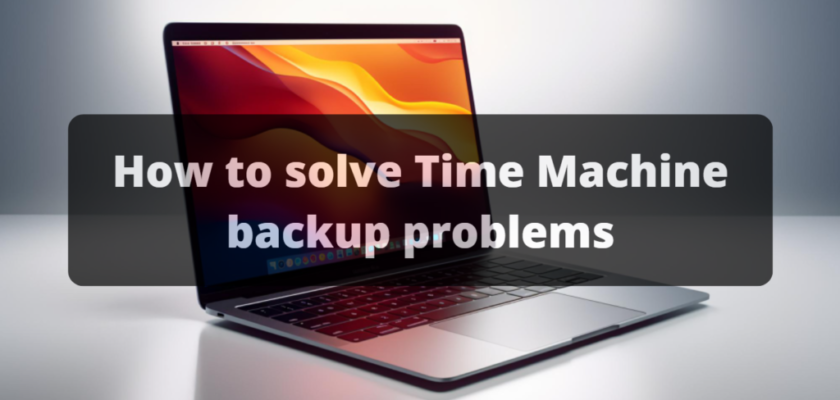In this article, we’ll look at some of the most common reasons your Time Machine backup might not complete and how to fix them.
But first, let’s look at what Time Machine is and how it works.
Time Machine is a backup utility built into every Mac. It allows you to create regular system backups, including files, applications, settings, etc. If something goes wrong, You can restore your system from any of these backups.
Time Machine creates “snapshots” of your system at regular intervals. These snapshots are stored on an external hard drive or network-attached storage device. You can then access these snapshots and restore your system earlier if necessary.
Now that we’ve covered the basics let’s look at some of the most common reasons your Time Machine backup might not be completed.
1. The Backup Drive Is Full
One of the most common reasons a Time Machine backup fails is that the backup drive is full. Time Machine requires free space on the backup drive to create new snapshots. Time Machine cannot start new snapshots if the drive is full, and the backup will fail.
There are a few ways to fix this problem. First, you can delete some older snapshots from the backup drive. Time Machine keeps hourly backups for the past 24 hours, daily backups for the past month, and weekly backups for all previous months. You can safely delete any of these older snapshots without affecting your ability to restore your system.
Alternatively, you can use a different backup drive with more free space. Time Machine will automatically use any available purpose with enough free space, so you don’t need to worry about format or compatibility issues.
2. The Backup Drive Is Not Connected
Another common reason for a failed Time Machine backup is that the backup drive is disconnected. Time Machine will only create snapshots if the backup drive is connected and available. If the drive is disconnected physically or due to network issues, the backup will fail.
To fix this problem, ensure the backup drive is connected correctly and accessible. If you’re using a network-attached storage device, ensure it’s turned on and connected to the network.
3. The Backup Drive Is Not Supported
Time Machine is designed to work with almost any external hard drive or network-attached storage device. However, there are a few types of drives that Time Machine does not support. These include encrypted drives, drives used for booting Windows, and specific RAID arrays.
If you’re using a drive that Time Machine doesn’t support, you must use a different drive for your backups. Alternatively, you can use Apple’s Time Capsule, a supported backup drive designed explicitly for Time Machine.
4. FileVault Is Enabled
FileVault is a feature built into every Mac that encrypts your entire system. It’s a great way to protect your data from theft or loss, but it can also cause problems with Time Machine.
Specifically, FileVault prevents Time Machine from accessing your system files while it’s locked. Time Machine can only create snapshots when your system is logged in and unlocked. If you’re not logged in, Time Machine cannot create snapshots, and the backup will fail.
To fix this problem, you’ll need to disable FileVault. You can do this by going to the Security & Privacy section of System Preferences and clicking the “Turn Off FileVault” button. Once FileVault is disabled, Time Machine should be able to create snapshots normally.
You can refer to this discussion on Apple Support Communities for solutions related to FileVault issues.
5. The Backup Drive Is Corrupted
Time Machine snapshots are stored in a special format that is designed to be resistant to data corruption. However, it’s still possible for the snapshots themselves to become corrupted. This can happen if the backup drive is damaged or if there are any errors when writing the snapshots to the drive.
Time Machine now includes error correction features to help prevent corruption. However, if your backup drive is corrupted, you won’t be able to access your snapshots or restore your system. The only way to fix this problem is to format the backup drive and start over. Be sure to back up any important files before formatting the drive, as all data on the drive will be erased.
These are just a few of the most common reasons why Time Machine might not be able to complete a backup.
If you’ve tried all the above and still can’t get Time Machine to work, you should contact a professional data recovery service. They can usually recover data from failed Time Machine backups, even if the reason for the failure is not listed here.

